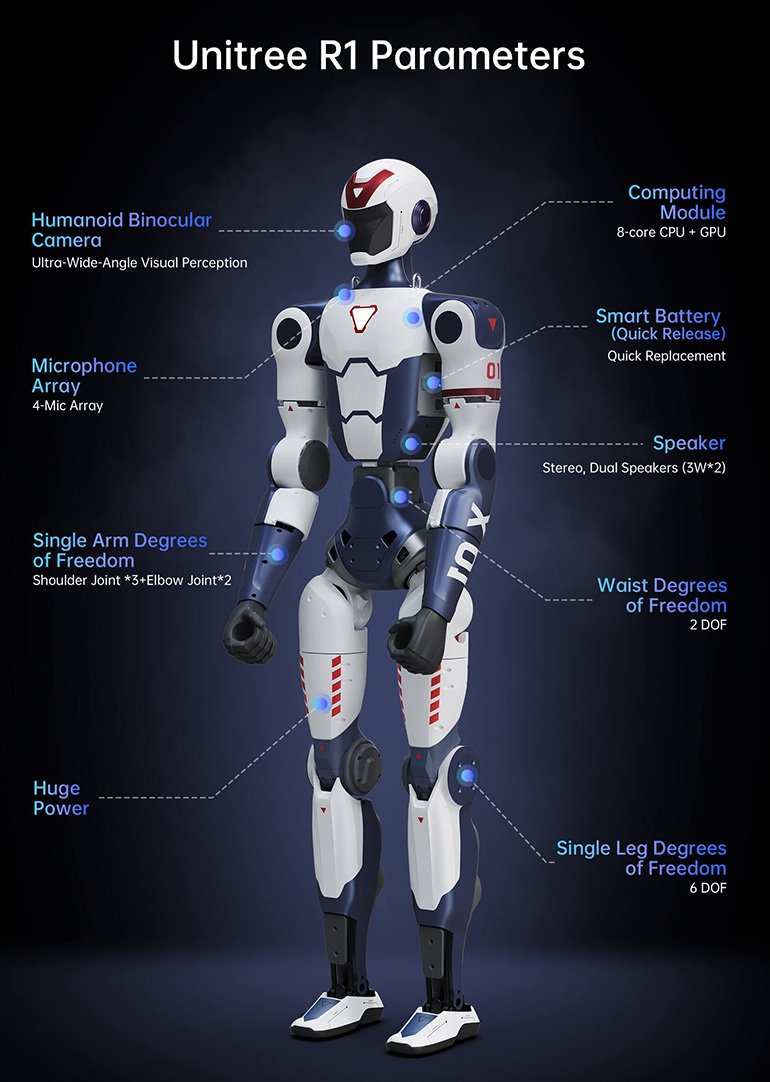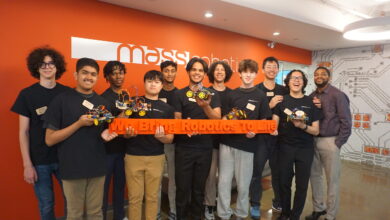Debating the Top 10 robots of all time
Our guests this week are Aaron Prather, director of the Robotics & Autonomous Systems Program at ASTM International, and Rajat Bhageria, founder and CEO and founder of Chef Robotics.
Join us on a fascinating journey through time as we explore the evolution and significance of iconic robots in the history of the industry.
Hosts Mike Oitzman and Steve Crowe recap Prather’s recent post of his Top 10 “robots that have moved the robotics industry forward,” and debate the order and composition of the list.
From early mechanical wonders to today’s AI-driven machines, discover how these creations have shaped our world and continue to influence our future. We also delve into some of the stories behind famous robots, their impact on technology and culture, and what they reveal about human ingenuity and imagination.
Show timeline
News of the week
New R1 humanoid comes from Unitree

Unitree has designed the R1 to be lighter and more agile than the G1.
Unitree last week unveiled its R1, with the standard model priced at $5,900. In comparison, Unitree’s G1 robot cost more than $13,000.
Unitree told The Robot Report: “Through years of robot development experience, we’ve further optimized the body structure. Additionally, as our commercialization matures and we achieve large-scale production and delivery, we’ve been able to achieve better cost control.”
The R1 humanoid stands 1.2 m (3.9 ft.) tall and weighs about 25 kg (55.1 lb.). This makes it slightly smaller than the G1, which weighed 35 kg (77.1 lb.), and enabling it to move with “lifelike” agility. Like some other humanoids, Unitree’s R1 is remote-controlled.
Teradyne releases Q2 earnings
Teradyne reported $75 million in revenue for the second quarter of 2025. The figure represents a 9% increase from Q1 2025, but a 17% decline year-over-year.
Collaborative robot unit Universal Robots (UR) remained the primary moneymaker by bringing in $63 million, or 84% of the group’s revenue for the quarter. Mobile Industrial Robots (MiR) generated $12 million.
The year-over-year decline reflected ongoing challenges in the global automation market, Teradyne CEO Greg Smith said during an earnings call. These challenges include extended sales cycles and cautious capital spending in key manufacturing sectors. For the first quarter of 2025, Teradyne said its robotics revenue was $69 million. This was down from $98 million in Q4 2024.
Earlier this year, Teradyne Robotics laid off about 10% of its workforce, citing the need to align operations with market conditions. The group has also undergone leadership transitions at both UR and MiR, moves the company said are aimed at sharpening strategic focus and improving execution across both businesses. The total revenue for Teradyne’s robotics group in 2024 was $365 million, with UR contributing $293 million and MiR $72 million.
Sponsor
Ever wondered why global giants like Rockwell, Micron, and HP chose Singapore for their cutting-edge manufacturing facilities? It’s no coincidence that the city-state is the world’s fifth-largest exporter of high-tech goods. From world-class talent to seamless supply chains and groundbreaking innovation, Singapore’s advanced manufacturing ecosystem is powering the future of Industry 4.0.
Ready to discover what makes Singapore the choice destination for manufacturing leaders and solution providers? Head to http://go.gov.sg/therobotreport to learn more.





